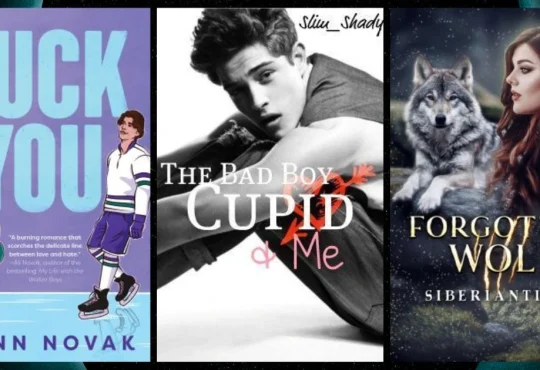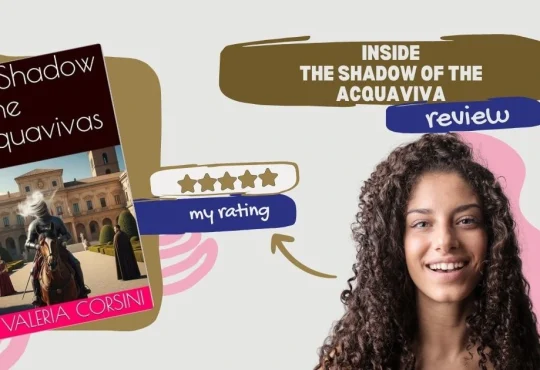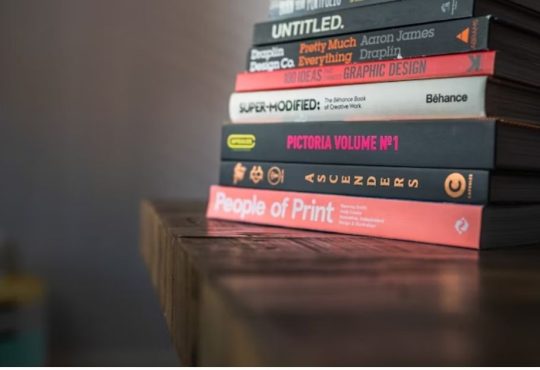Book reviews have always been an essential part of literary culture, helping readers discover their next great read while fueling discussions about plot twists, character development, and underlying themes. They act as a bridge between writers and readers, offering insights that can shape how a book is understood and appreciated. In many ways, they’ve been the compass for book lovers, pointing toward stories worth exploring and voices worth hearing.
In today’s digital era, the art of reviewing books has evolved into something far more dynamic and engaging. Reviews are no longer limited to a block of text—they’re becoming more interactive, visually creative, and even entertaining. From video summaries and illustrated reviews to social media posts that combine quotes, aesthetics, and personal reflections, the modern book review captures the spirit of the reading experience. It’s less about a dry critique and more about turning personal impressions into an art form, inviting deeper connection and conversation among readers.
10 Creative Book Review Ideas That Inspire Readers in 2025
1. Visual Storytelling Reviews
A picture truly can speak volumes, especially when it comes to evoking the essence of a book. Visual storytelling reviews merge literary critique with aesthetic design, transforming a simple opinion into a multi-sensory experience. Platforms like Instagram, Pinterest, and TikTok have given rise to this style, where reviewers pair their thoughts with carefully curated imagery.
The concept is simple yet powerful—photograph the book in a setting that reflects its mood, setting, or themes. For a Gothic mystery, the scene might feature flickering candles, a worn leather journal, and shadows that dance across the page. A seaside romance could be framed with driftwood, seashells, and sun-bleached linen, while historical fiction might be paired with antique clocks, lace gloves, or old letters. Some reviewers take it further by creating cinematic TikTok reels or Pinterest boards that capture the book’s palette, textures, and emotional tone. This approach turns the review into a sensory event, helping viewers feel the atmosphere before they’ve even read the first page.
2. Character Interviews
Instead of simply summarizing a character’s traits, some reviewers bring them to life through imaginative Q&A sessions. These “character interviews” blur the line between critique and storytelling, creating a playful yet revealing format. The reviewer assumes the role of an interviewer, posing questions that the author never wrote. Still, readers might secretly want to know—favorite comfort foods, hidden fears, pet peeves, or how they’d survive in a modern setting.
This style of review goes beyond the surface, offering insights into the book’s world and character dynamics in a way that feels intimate and engaging. For fans, it’s a bonus layer of immersion—like getting a private conversation with the protagonist or even the antagonist. The tone can range from humorous banter to deeply emotional exchanges, depending on the genre and mood of the book. It works beautifully for blog posts, social media content, or even podcast segments, giving readers a reason to connect with the characters long after the final chapter.
3. Themed Review Formats
A book review doesn’t have to follow the same formula every time—sometimes, the structure itself can become part of the storytelling. Themed reviews invite creativity by matching the review’s format to the tone, genre, or themes of the book. A foodie novel might inspire a recipe-style review, listing “ingredients” (plot points) and “instructions” (how the story unfolds) along with a “taste test” verdict. For a travel-heavy book, the review could read like a trip itinerary, detailing the narrative’s “destinations,” “local highlights,” and “unexpected detours.”
This approach can work for any genre: a twist-filled mystery could be delivered as a detective’s case file, complete with suspect lists and evidence notes; a rom-com could take the form of a dating profile for the main characters, rating their “chemistry” and “long-term potential.” Even a dark fantasy could be reviewed as an ancient prophecy scroll or a magical grimoire. Themed formats make the review feel like an extension of the book’s universe, drawing readers in before they’ve even cracked the cover.
4. Video & Performance Reviews
In the age of BookTok and BookTube, reviews have evolved into miniature performances that blend critique with entertainment. Instead of simply talking about a book, reviewers act it out—sometimes literally. A particularly intense scene can be recreated in costume, with lighting and sound effects to match the mood. Comedy lovers might use quick skits to summarize the plot with exaggerated reactions or parody moments that made them laugh or groan.
For a subtler approach, “silent reviews” let expressions do the talking—filming a reader’s live reactions as they turn pages, from laughter to shock to teary-eyed awe. Dramatic readings of favorite passages, paired with music or cinematic visuals, can turn even a quiet review into a theatrical moment. Whether humorous or heartfelt, performance-based reviews thrive because they make a viewer feel something—mirroring the emotional impact the book had on the reader.
5. Interactive Reviews
A good review doesn’t just inform—it sparks conversation. Interactive reviews turn readers from passive observers into engaged participants. Polls can invite them to guess the book’s genre based on a vague description, vote on their favorite character, or rate how “unputdownable” the story sounds. Choose your own rating” posts let the audience weigh in on different aspects—plot, pacing, character depth—before revealing the final verdict.
Adding discussion prompts at the end of the review—questions about the themes, moral dilemmas, or character choices—can ignite thoughtful debates. For a playful twist, sneak in “easter eggs” throughout the post: obscure quotes, recurring emojis, or inside jokes that only those who’ve read the book will catch. These small details build a sense of camaraderie, making the review feel like a secret clubhouse for fellow fans.
6. Hybrid Media Reviews
Some stories beg to be experienced through more than words, and hybrid media reviews embrace that by blending multiple formats into one experience. A traditional write-up can be paired with hand-drawn sketches of favorite scenes, character portraits, or doodled annotations on key quotes. Voice notes or short audio clips can capture the reviewer’s tone and emotion—whether it’s giddy enthusiasm or dramatic outrage.
For the visually inclined, digital art, mood boards, or GIF animations can complement the text, immersing the audience in the book’s aesthetic. Even snippets of music or soundscapes inspired by the story’s setting—a rainy forest, a bustling café, a haunted mansion—can turn a simple review into a sensory experience. In a crowded field, hybrid reviews stand out not just for their creativity but for the way they make the book feel alive before the first page is even turned.
7. Character Letter Reviews
Rather than following a conventional review format, feedback can be framed as a letter to a character from the book, film, or series. The piece might open with a greeting before moving into expressions of gratitude for moments that inspired, challenged perspectives, or brought humor. It can also include questions about certain decisions, reflections on moments where different actions might have been preferable, or advice offered as though part of the character’s world. This approach builds an emotional bridge between the narrative and the audience, offering a fresh, intimate perspective while illuminating the reviewer’s engagement with the story.
8. Social Media Carousel Reviews
Transform your review into a visually engaging swipe-through carousel, perfect for platforms like Instagram or LinkedIn. Start with a bold first panel that hooks viewers—maybe a dramatic quote or a question that stirs curiosity. The next panels can feature your favorite quotes or standout moments, each paired with striking visuals. Follow with a concise yet thoughtful analysis of themes, pacing, or character development. End with a final panel featuring your rating, recommendation, or a short call-to-action (like “Read this if you love…”). This format feels interactive, modern, and highly shareable, making it perfect for audiences who prefer bite-sized, visually appealing content.
9. Creative Rating Systems
Standard five-star ratings get the job done, but imaginative rating systems turn your reviews into memorable experiences. Match your scale to the book’s theme—rate a romance in heartbeats, love letters, or first kisses. For fantasy, consider using enchanted daggers, shimmering gold coins, or radiant phoenix feathers. A thriller could be measured in cliffhangers survived or plot twists endured. The key is to make the rating not only playful but also reflective of the story’s tone. This kind of thematic scoring doesn’t just tell readers how much you liked a book—it makes them smile, and it gives your review a signature style they’ll remember.
10. Cinematic Review Videos
Think of your review as a trailer for the reading experience. Pair short, dramatic text overlays with atmospheric music and quick, evocative visuals—close-ups of flipping pages, landscapes that match the setting, props that symbolize key plot points, or even mood lighting that reflects the book’s tone. Include voice-over snippets of your favorite quotes, layered with pacing that builds tension or excitement. End with a strong call-to-action, like “This isn’t just a story—it’s a world worth stepping into.” Perfect for BookTube, TikTok, or Instagram Reels, this style doesn’t just summarize—it seduces the viewer into picking up the book.
Redefining the Art of Book Reviews
Creative book reviews go beyond traditional critique, functioning as an art form that transforms analysis into an immersive experience. Rather than limiting focus to plot summaries or stylistic evaluations, this approach breathes life into a book beyond its pages, blending critique with storytelling and offering new avenues for literary engagement. The result is a format that captures attention, inspires curiosity, and encourages conversation.
Structured, innovative review concepts can further enhance this process, serving as flexible frameworks to present thoughts with originality. These formats turn reviews into miniature works of art—pieces that invite audiences to experience stories from fresh perspectives and connect with literature on a deeper level.





